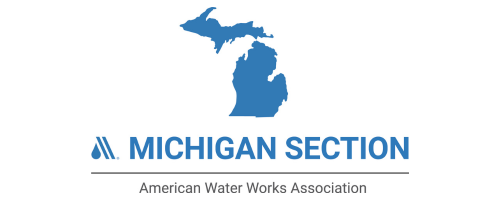AWWA Water Utility Insider
|
Get AWWA Insider news every other week when you become an AWWA Water Utility or Organizational member!
|
EPA announces WIFIA funding, new loan closingsThe U.S. Environmental Protection Agency (EPA) on Thursday announced $6.5 billion in available funding for water systems and $550 million for states through the Water Infrastructure Finance and Innovation Act (WIFIA) program, along with five new loan approvals for projects in Texas, Illinois, Florida, and Oregon. Specific project details are available in the press release. As part of the announcement, EPA identified five priorities when evaluating letters of interest, including:
Prior to this week’s announcement, EPA had closed three WIFIA loans in 2025, compared with 18 loans in 2024 and 24 loans in 2023. AWWA wrote to EPA Administrator Lee Zeldin in October to emphasize the importance of the WIFIA program and request that the agency resume loans closings as soon as possible. |
Government reopens after 43-day shutdownThe U.S. government resumed operations Nov. 12 after the House and Senate narrowly agreed to a Continuing Resolution (CR) extending previous funding levels through Jan. 30, 2026. The agreement also included full-year appropriations for the legislative branch and the departments of agriculture, defense, and veterans affairs. While the bill does not provide long-term funding for EPA or drinking water programs, Congress included a one-year extension of the Farm Bill, which sets aside a portion of conservation funds to protect source water. The CR also included a short-term extension of the Cybersecurity Information Sharing Act of 2015, which AWWA recently pressed Congress to act on. |
AWWA releases corrosion control frameworkAWWA released a new publication, titled, “Corrosion Control Implementation Framework.” Although EPA has delayed the proposed Revisions to Select Microbial and Disinfection Byproducts (MDBP) Rules, it has not yet adjusted its stated goal of finalizing the rule in 2028. AWWA’s new framework is intended to help water systems prepare for what is expected to be a key component of the revisions: a federal numeric secondary disinfectant residual concentration, accompanied by changes to compliance sampling requirements and the current compliance algorithm. It also will be useful for systems working to comply with or engage in policy discussions about state secondary disinfectant residual requirements.
|
AWWA framework helps utilities with levels of service metricsAWWA has developed “Levels of Service Metrics: Guidance for Water Sector Utilities” (LoS), to help utilities define, measure, and communicate service attributes measured through performance indicators. This framework emphasizes the role of customer engagement, employee alignment, and performance reporting in achieving sustainable service outcomes. It transforms strategic goals into measurable, actionable targets to optimize resource allocation, operational decisions and performance management. By establishing clear performance targets aligned with customer expectations and organizational capabilities, utilities can make informed decisions on their asset management practices, improve customer engagement, and align employee activities with organizational goals.
|
EPA releases new UCMR 5 dataEPA released the 10th set of data collected under the fifth Unregulated Contaminant Monitoring Rule (UCMR 5), which covers 30 chemical contaminants — 29 PFAS (per- and polyfluoroalkyl substances) and lithium. While UCMR 5 results do not directly affect compliance with the PFAS maximum contaminant levels (MCLs), systems can use the underlying data to fulfill initial monitoring requirements under the PFAS drinking water standard. The latest update does not significantly change overall occurrence trends. Lithium remains, by far, the most widely detected UCMR 5 analyte, appearing in 35% of systems reporting data and exceeding EPA’s health reference level in 25.5% of them. Communicating with customers about lithium in drinking water presents unique challenges for water systems. Water systems with detectable perfluorooctanoic acid (PFOA) and perfluorooctane sulfonate (PFOS) are comparable (12.1% and 12.7%, respectively), and the MCLs for these analytes are set at the method reporting level (MRL). |
Queuing up new regulationsOver the course of the year, EPA has indicated through public statements and the Unified Regulatory Agenda that it will propose several drinking water standards this year. In the spring, EPA announced its intent to retain the promulgated MCLs for PFOA and PFOS and extend compliance timelines. The agency also indicated it would withdraw the regulatory determinations for perfluorohexanesulfonic acid (PFHxS), perfluorononanoic acid (PFNA), and hexafluoropropylene oxide dimer acid (HFPO-DA), also commonly known as “GenX.” These underpin the PFAS Hazard Index MCL, along with perfluorobutanesulfonic acid (PFBS). In addition, EPA accepted a consent agreement requiring it to propose a primary drinking water standard for perchlorate this month. The Office of Information and Regulatory Affairs (OIRA) at the Office of Management and Budget typically reviews rulemakings before proposed and final rules are published. OIRA typically has up to 90 days to review rules, but actual timelines vary. For example, OIRA’s review of the recent Waters of the United States proposal took 78 days, and the Toxic Substances Control Act PFAS Reporting Rule review took 56 days. EPA submitted the proposed perchlorate rule to OIRA for review Nov. 6, but has not yet submitted the two anticipated PFAS drinking water standard proposals. Several other rulemakings under other statutes that impact water utilities are currently under review at OIRA, including:
|
Senate committee holds hearing on PFAS liabilityThe U.S. Senate Committee on Environment and Public Works (EPW) held a hearing this week to examine the future of PFAS cleanup and disposal policy after the Comprehensive Environmental Response, Compensation, and Liability Act (CERCLA) hazardous substance designations for PFOA and PFOS were retained. Witnesses at the hearing included representatives from Clean Harbors, the Associated General Contractors of America, and the Congressional Research Service.
|
|
The Water Utility Insider is developed by AWWA's Government Affairs Office in Washington, D.C. Contact them with questions on legislative or regulatory matters. |
